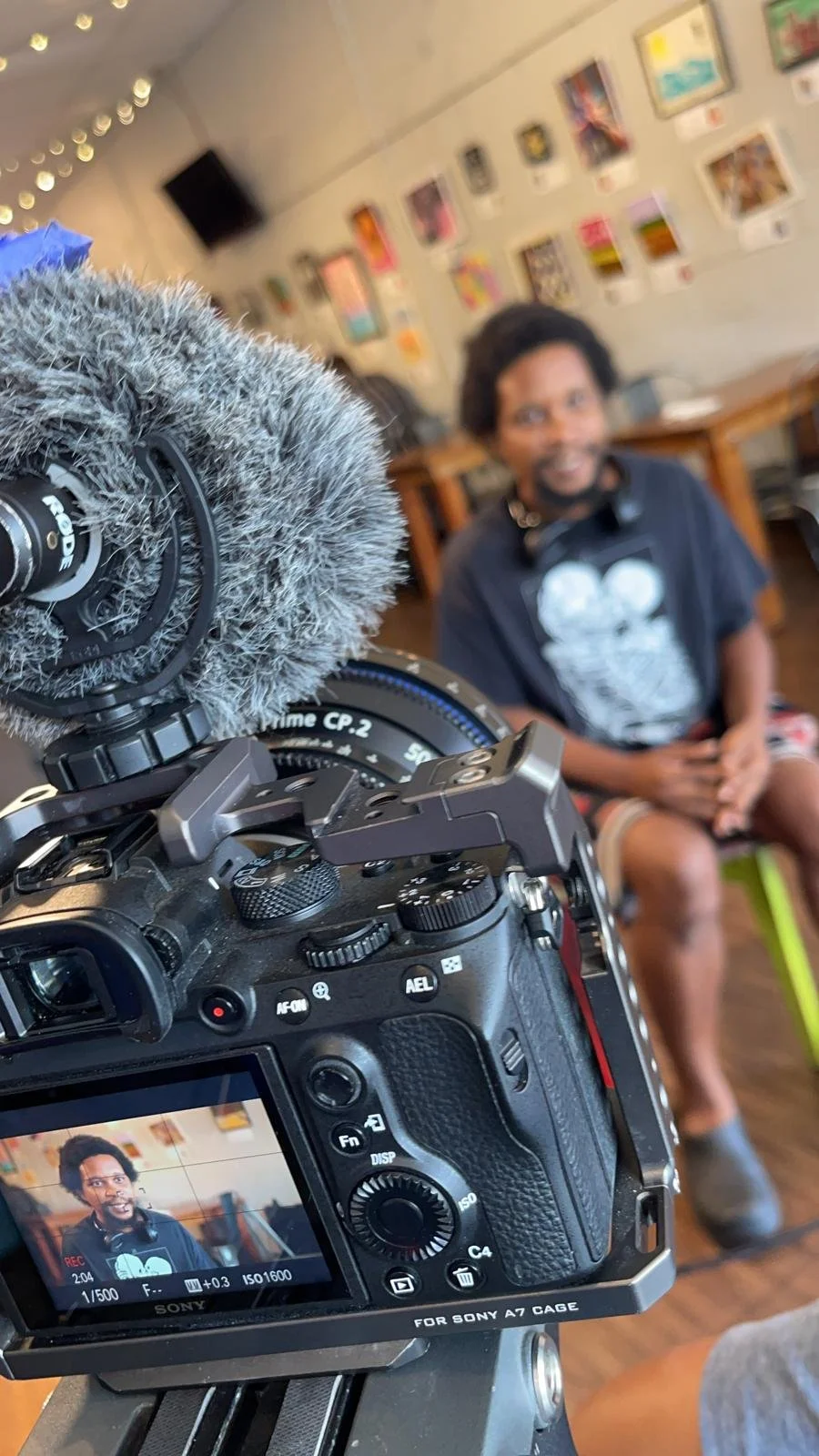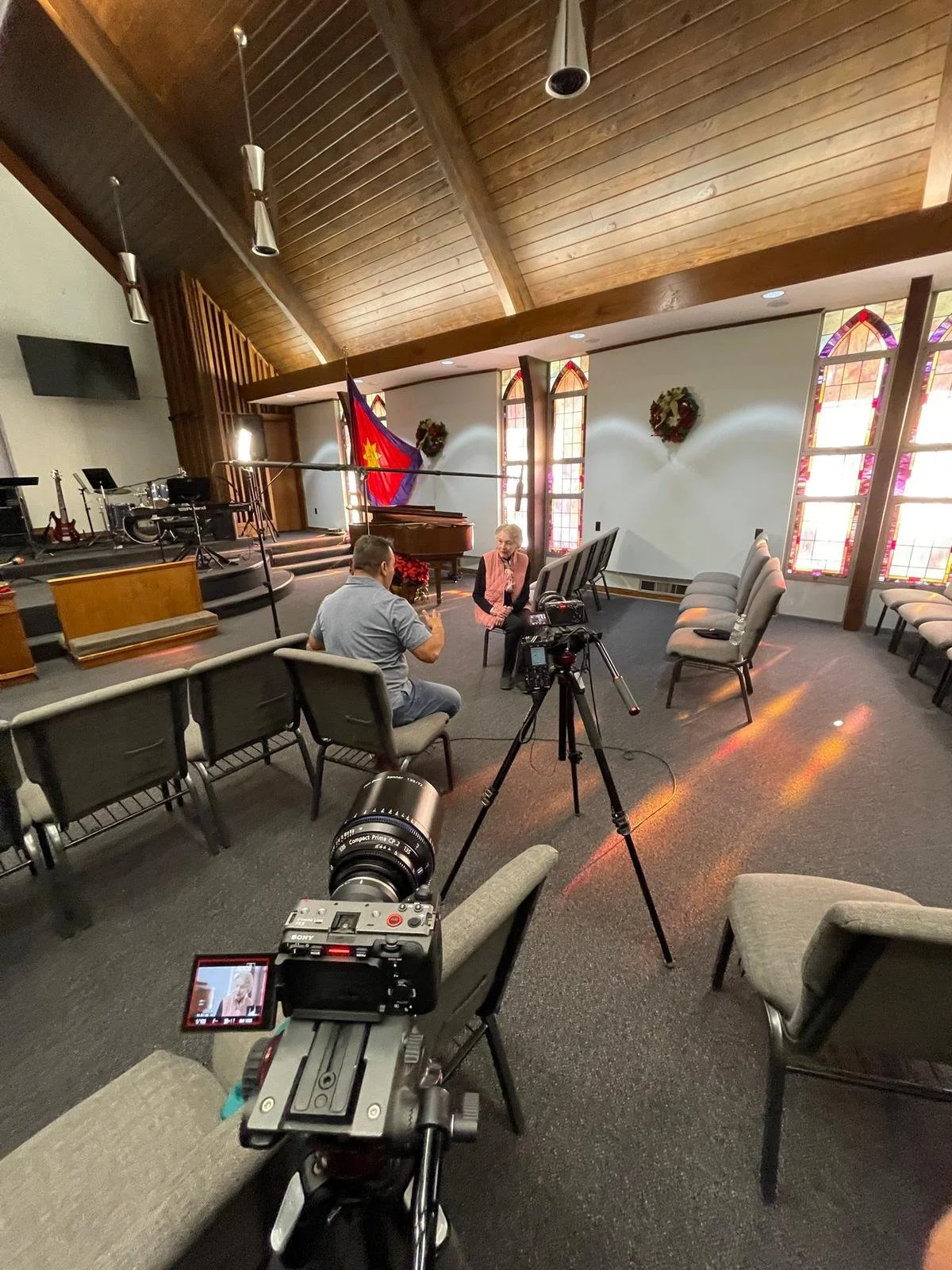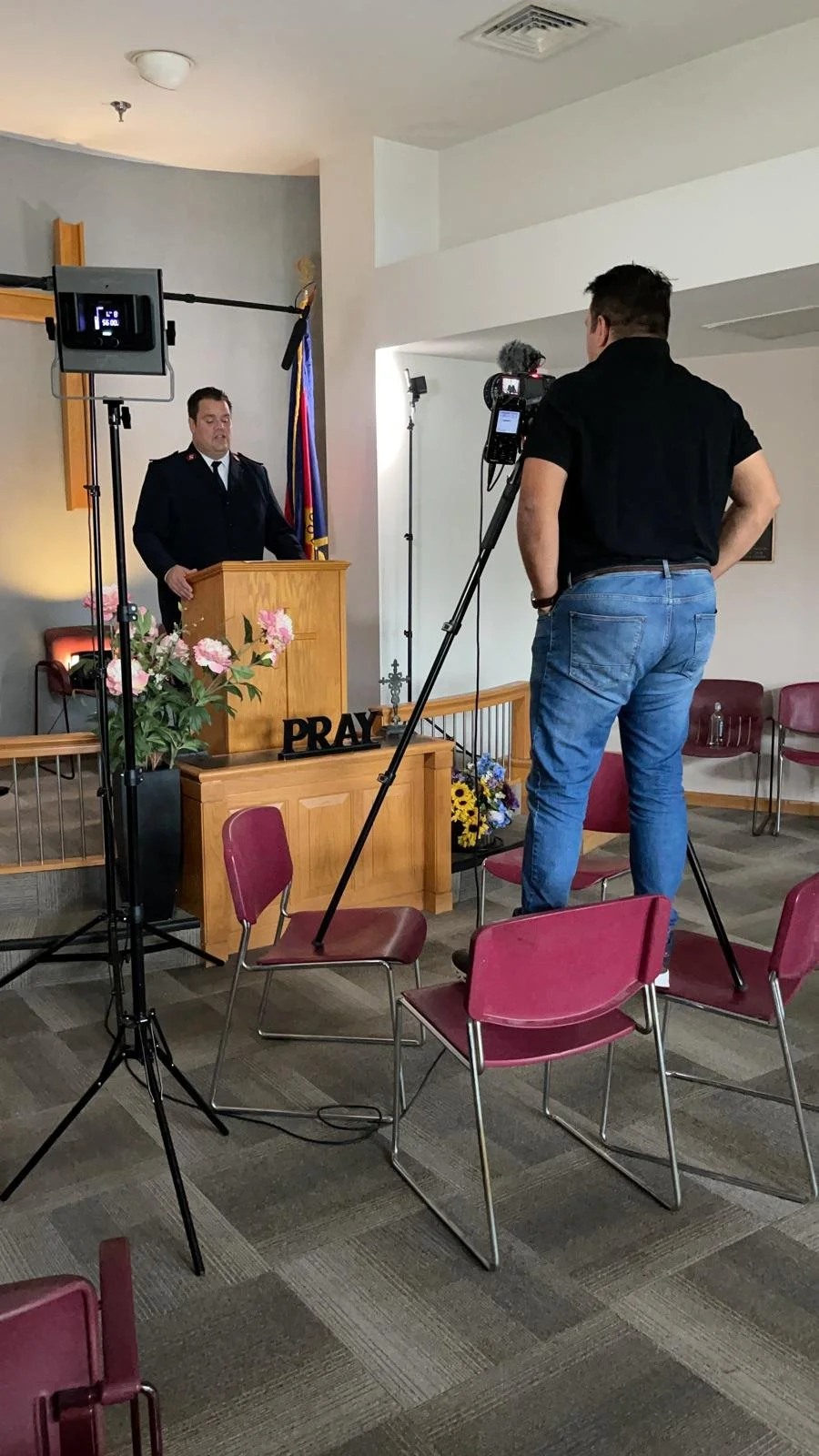Preserving Our Legacy: The Transformative Power of Storytelling During Salvation Army Week
Celebrating Heritage Through Stories
Every May, The Salvation Army celebrates its enduring legacy during Salvation Army Week—a time filled with gratitude, reflection, and vision for the future. As we honor this tradition and look ahead, one profound truth emerges:
Our legacy lives through the stories we choose to tell and the ones we choose to capture.
At G-Lab Group, we believe that stories are the architecture of memory. They aren't merely snapshots of the past; they're seeds planted for future generations. While we proudly offer professional storytelling packages to support Salvation Army units nationwide, we recognize a tapestry of everyday miracles unfolding locally; moments that only you can witness and document in real time.
We're launching this comprehensive blog series to equip you with practical, accessible methods for gathering stories as they happen. Because every testimony deserves a voice, and every voice contributes to our collective mission.
Our Storytelling Blog Series
In this series, we'll guide you through the complete journey of capturing and sharing authentic stories:
1. Preserving Our Legacy: The Transformative Power of Storytelling During Salvation Army Week (Current Post.) Where we explore why storytelling matters and how it shapes our collective identity
2. The Storytelling Formula That Never Fails: How to Guide a Successful Interview. Where we'll share the first half of our proven storytelling framework - building trust, establishing the journey, and identifying turning points
3. Unlock the Storyteller's Power: Proven Techniques for Transformational Interviews Part Two of The Storytelling Formula That Never Fails - where we'll complete the framework with techniques for illuminating transformation, envisioning the future, and crafting these stories into compelling content.
We invite you to follow along with each installment and begin implementing these techniques within your ministry context. The stories you capture today will become tomorrow's testament to the lasting impact of our work.
Today, we begin by exploring the fundamental importance of storytelling and providing actionable strategies to capture these narratives in ways that honor the mission we all serve.
Why Storytelling Matters: Beyond Numbers to Narrative
Facts inform. Stories transform.
We can share impressive statistics—10,000 meals served, 500 families housed—and people will acknowledge them politely. But when you tell the story of one mother who no longer has to choose between paying rent and feeding her children, hearts are moved. Trust deepens. Support materializes.
At the heart of every transformative story lies a crucial, often overlooked element: the interview. While we celebrate finished videos and polished testimonials, the quiet moments of conversation—where trust is built, memories are explored, and transformation is articulated—determine whether a story will move hearts or fall flat. The most sophisticated cameras, perfect lighting, and expert editing cannot rescue a story that wasn't uncovered adequately through a thoughtful interview process.
Stories accomplish what statistics alone cannot:
They humanize abstract concepts and make the impact tangible
They create emotional connections that inspire action
They illuminate the "why" behind the "what" of our work
They preserve institutional knowledge and wisdom for future generations
They validate the experiences of those we serve, confirming they're not alone
In a digital landscape saturated with content, authentic storytelling cuts through the noise with unmatched clarity. And authentic storytelling begins with the art of the interview—the moment when someone is invited to share not just what happened, but how it changed them.
We're launching this comprehensive blog series to equip you with practical, accessible methods for mastering the interview process. Because the foundation of every impactful story is not the production quality or the editing technique—it's the sacred conversation where stories are first discovered and shaped.
Two Approaches to Salvation Army Storytelling
In your day-to-day work, you'll encounter two distinct types of storytelling opportunities:
1. Spontaneous Stories: Capturing the Moment
Some stories unfold unexpectedly before your eyes—a family receiving their first proper meal in days, a veteran moving into stable housing after years of homelessness, or a volunteer experiencing the joy of service for the first time.
These spontaneous moments are perfect for mobile content creation. With just your smartphone, a basic clip-on microphone, and attentive awareness, you can document the heartbeat of your mission as it happens. These authentic glimpses—raw, honest, immediate—become invaluable assets for:
Social media engagement
Volunteer recruitment materials
Donor communications
Staff inspiration and training
Community awareness initiatives
2. Strategic Stories: Crafting the Narrative
Other stories require intentional development as part of a broader strategy, whether for annual fundraising campaigns, major donor reports, capital projects, or community awareness initiatives.
Partnering with professionals becomes essential when launching efforts to move people to significant action.
At G-Lab Group, we don't simply capture footage. We architect narratives strategically designed to integrate seamlessly into your larger fundraising, marketing, and digital ecosystems. We help transform testimonies into movement, awareness into action, and individual stories into sustained organizational impact.
In essence:
Use your phone to capture life as it unfolds naturally.
Partner with G-Lab Group when you need stories that move an army.
Preparing for an Interview: Setting the Stage
Setting the proper environment is crucial before considering turning on the camera. Storytelling, especially sensitive experiences, requires more than just a good angle or a working microphone. It requires creating a safe, welcoming space where trust can grow — even if you only have a few minutes to build it.
The first thing to focus on is the environment itself. Always look for a quiet space, free from distractions. It's not just about getting clean audio; it’s about helping the person feel calm. Loud noises, people walking around, or constant interruptions can cause your interviewee to lose their train of thought or feel uneasy, and once that happens, the depth of the story can quickly get lost.
If you’re interviewing a client of The Salvation Army, it’s essential to understand that you might not be the person they trust most. Most clients have a strong relationship with their caseworker, not with you. So, having the caseworker present during the interview is a good practice whenever possible. Their presence is a bridge of trust, a silent reassurance that this is a safe space. Having someone familiar nearby can often help clients open up in ways they wouldn’t otherwise.
Environmental and Emotional Considerations Check-List
Physical Space:
Select a quiet location free from distractions and interruptions
Choose comfortable seating arranged at conversational angles rather than confrontational positions
Ensure appropriate temperature and lighting that feels welcoming, not institutional
Remove visual clutter that might appear in the background
Consider offering water or tissues—small gestures that acknowledge humanity
Emotional Safety:
When interviewing clients, include their caseworker or someone they trust, if possible
Position yourself at eye level, never standing over someone who's seated
Begin with a casual conversation before starting the recording
Practice active listening—nodding, maintaining appropriate eye contact, and offering affirming responses
Allow for pauses and silence without rushing to fill them
Setting Clear Expectations
People feel safer when they understand what's happening. Take time to explain:
Purpose: Why this story matters and how it will be used
Process: How long will the interview take (typically 10-15 minutes)
Product: What the final video will look like (length, style, tone)
Placement: Where the content will appear (website, social media, events)
Audience: Who will see their story, and why it will resonate
Parameters: They can pause, skip questions, or stop at any time
These simple points help the person mentally frame their answers, knowing what kind of story they are helping to tell. It also helps reduce anxiety because they don't have to imagine worst-case scenarios about where their words might end up.
The secret to obtaining consent without creating discomfort
Another important detail that can never be skipped: asking for verbal permission to use the footage. Right after introducing yourself and explaining the interview, ask on camera:
"Do you authorize us to record and use this interview for The Salvation Army's communications?"
While this recorded consent is valuable, it doesn't replace the official Salvation Army release forms, which should always be completed according to your organization's policies.
Technical Preparation Check-List
Don't forget: small technical preparations matter too. Ensuring the phone or camera lens is clean, the microphone is appropriately clipped, and the subject faces good light (like a window) might sound basic, but they create a visual atmosphere that shows care and respect. Even in casual interviews, how you capture someone reflects how you value their story.
Clean your phone or camera lens.
Test your microphone before the interview begins
Position the subject facing natural light when possible
Frame the shot thoughtfully (from chest up, using the rule of thirds)
Eliminate background noise (HVAC systems, office equipment, outside traffic)
Have backup batteries or charging options available
Above all, remember that interviews are not interrogations. They are conversations built on dignity and compassion. When you approach someone with warmth, clarity, and real attention, you are not just collecting footage but honoring their journey.
In a world full of noise, giving someone your undivided attention is one of the purest ways to show them they matter.
Final Thoughts: Stories as Legacy
The stories that define The Salvation Army aren't just found in history books or archives—they're unfolding in every corps, shelter, and community center across the country. During Salvation Army Week and beyond, we invite you to become participants in our mission and guardians of our shared narrative.
Every conversation with a client, every volunteer experience, every transformed life contains the seeds of a powerful story. By capturing these moments through thoughtful interviews, we preserve our legacy and actively shape it. These stories become the bridges that connect head to heart, statistics to souls, and mission to meaning.
As we continue this storytelling journey, remember that you don't need professional equipment or years of journalism experience to capture meaningful stories. What you need is already within you: compassion, curiosity, and a genuine desire to honor the sacred journeys of those we serve.
Don't miss the next post in our storytelling series: "The Storytelling Formula That Never Fails: How to Guide a Successful Interview," where we'll share practical, step-by-step techniques for creating the emotional safety and structure that lead to authentic, powerful stories. Subscribe now to ensure you receive it directly in your inbox, and together, let's ensure that The Salvation Army's work continues to be told through the voices of those who've experienced it firsthand.



